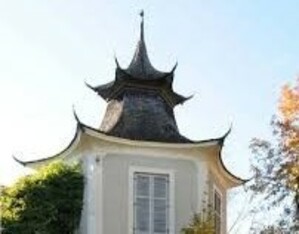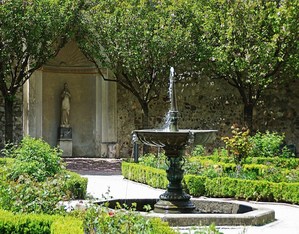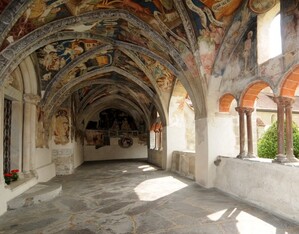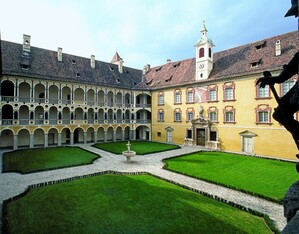A small but very well-tended garden, once for the local clergy’s rest and recreation, after meticulous recovery, since 1992 it has been open to the public, offering a pleasant and relaxing break in the city centre.
Cardinal Cristoforo Madruzzo and his Coadjutor, future bishop Johann Thomas von Spaur, commissioned master builder Johann Jakob de Quadria to build the Bishop’s Palace around 1570. In Renaissance times, the palace already had a garden. However, the garden open to visitors today, recently restored by the Superintendency of Bolzano, is based on a plan from 1831. Hemmed in by buildings and boundary walls, the garden’s limited space is divided by avenues into four geometric compartments, with a 19th-century bronze fountain in the middle. Recalling the Renaissance tradition, the flowerbeds host ornamental flowering plants and medicinal and edible plants. The innermost portions of the flowerbeds are for herbs and vegetables, while corner squares are for aromatic, medicinal and aphrodisiac herbs. The flowerbeds are surrounded by low boxwood hedges, with heirloom/English roses growing in the borders, mixed in with lavender, gypsophila, larkspur and several species of grasses. A number of yew plants shaped in a conical form are examples of tradition of ars topiaria, while potted plants of bitter orange, laurel and daisies sit in the corners. Two Ginkgo biloba trees – not in the original arrangement – have been preserved on the south side of the garden because they are unusual around these latitudes. To the south stands a vast pomarium of three hectares, documented since the Middle Ages, along with perimeter walls. Within two unique 16th-century corner pavilions, which were rebuilt between the late 18th and early 19th centuries, frescoed rooms on the upper floor offer panoramic views.






